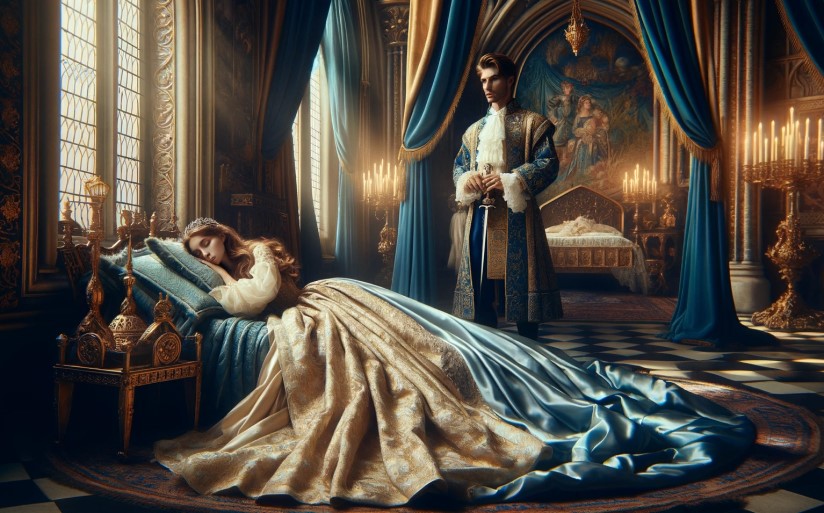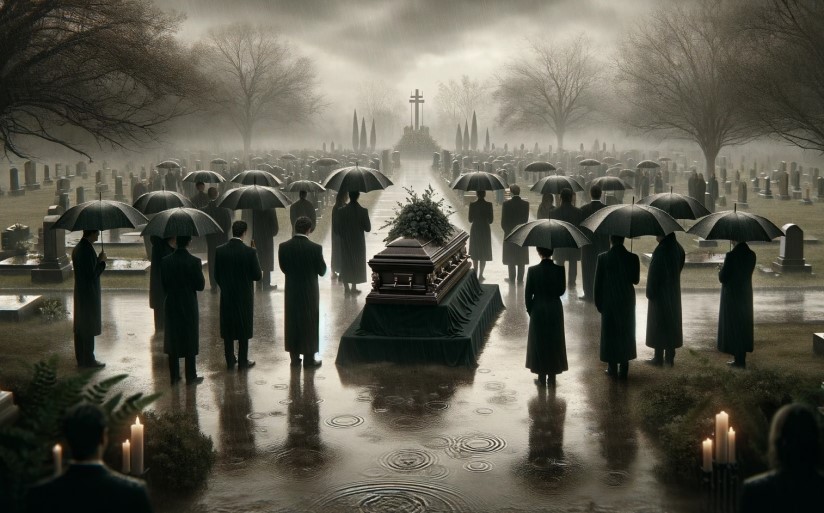Mistaken identity is one of the most common tropes in all of storytelling.
From “The Adventures of Huckleberry Finn” to “The Big Lebowski,” writing is filled with instances of one person being mistaken for another and hijinks ensuing. If you’re worried about being mistaken for somebody who knows what a trope is when, in actuality, the concept’s a little hazy, you’ve come to the right place.
What Is a Trope?
Tropes, much like figures of speech, are tools writers use to convey familiar ideas or patterns in storytelling, often with a twist.
More specifically, a trope is a literary device, theme, plot point, character trait or even an entire character that is overused. Every medium and every genre has its own; some tropes span several media and genres.
The reluctant hero is a trope of action movies, for example. (We see you, John Wick.) The otherwise coordinated person tripping and falling while trying to outrun the murderer in a horror movie is an uber-popular trope, too.
How Do You Define Trope?
Here’s an even simpler trope definition: A trope is a creative element that is played out.
One of the most famous of these is the windbag villain. You know what I’m talking about: It’s Palpatine snarling at Luke in “Return of the Jedi.” It’s Loki telling the Avengers why they’re a bunch of buff morons in every Marvel movie. It’s Edgar Allan Poe’s “The Cask of Amontillado” in its entirety. When the villain starts monologuing instead of bumping off the hero, that’s a trope; it’s been done hundreds of times before.
Tropes may be tired, but they aren’t necessarily bad. In essence, they’re culturally specific shorthand for communicating ideas. When done well, these oft-repeated story elements can be effective.
Take the 1996 satire “Scream,” for example. The entire movie is based on subverting American horror movie tropes such as the idea that any character who drinks, does drugs or — gasp! — has sex will meet a grisly fate. There’s very little in Wes Craven’s blockbuster that hadn’t been done before, but none of it had been done quite like “Scream” did it.
Ultimately, what matters is how the trope is executed. (No pun intended, of course.) When a familiar literary element is used in an original way, it’s satisfying. When it’s overused and uninspired, then you’re entering cliche country.

What’s the Difference Between a Trope and a Cliche?
Cliches are creative elements that are overused, unoriginal and uninspired. There’s are no interesting twists on well-worn plot points or character traits to be found; there’s merely a feeling of “been there, done that.”
You’re probably most familiar with cliched sayings, such as “falling head over heels” in love or finding “a diamond in the rough.” These tired sayings, beloved by great-aunts worldwide, are overworked to the point of having little to no meaning.
Characters and other story elements can be cliches, too. Several Disney princesses are stock “damsel in distress” characters, for example. Take Aurora from “Sleeping Beauty.” She’s a super-cliche. Check out her stats:
- She’s a princess.
- She doesn’t go toe-to-toe with Maleficent because she’s asleep for a large chunk of the story.
- She has to be saved by a handsome prince.
- That handsome prince fell in love with her at first sight — i.e., he likes her because she’s hot and not because she’s good at Mario Kart or math or plays a mean air guitar.
In short, “Sleeping Beauty” does nothing new with the familiar damsel in distress character. Sorry, Aurora. You’re a cliche.
Elsa from “Frozen,” on the other hand, subverts the damsel in distress trope. She’s in charge, she’s tenacious, she kicks some icy butt and she doesn’t need a dude to save her. She still ticks several boxes on the Disney princess checklist, but she ultimately rises above the trope by doing something new and different with that very recognizable “Disney princess” framework. You might say she lets it go.
Sorry. I couldn’t resist. Here’s a quick summary of tropes vs. cliches to make things up to you: Tropes and cliches have a lot in common. They’re both born from familiar creative elements, like plot points or character types.
The difference? Tropes take those elements and spice them up somehow, typically in a deliciously unexpected way. Cliches are dry and stale.

Trope Meaning Examples
Storytelling began in roughly 700 B.C., so yeah … There are a lot of tropes in circulation, each one waiting to be twisted and remixed by a skillful writer. New ones are created constantly.
Below is a baker’s dozen of common trope examples. As you read through them, see if you can think of a movie, book or TV show that includes each one — and then see if you can think of another example that subverts it.
- Henchmen with incredibly bad aim.
- A girl who takes off her glasses and suddenly becomes a mega-babe.
- Tearfully shouting “Don’t die on me!” or “Don’t leave me!” or “Wake up!” at a dying person (bonus points if he or she is, in fact, already dead).
- Ordering a beer not by name but by saying the word “beer” in the general direction of the bartender.
- A dad who cares more about his job than he does his kids.
- Zooming in extremely close on a grainy photo (a.k.a. “enhancing”) to find useful evidence in the background.
- Casually walking away from an explosion without taking shrapnel to the butt
- A slow song suddenly coming on when a couple starts dancing.
- Eating Chinese food straight out of the paper carton (bonus points for using the free chopsticks included with the order).
- A police officer continuing to work on a case after being dramatically thrown off of it.
- A detective pinning dozens of photos and newspaper clippings to the wall (bonus points for connecting them with string).
- An unwrapped French baguette peeking out of a brown paper grocery bag
- Rain at a funeral.
Tread Carefully With That Trope
Tropes are a language we all share, but if you want to become a better writer, use tropes thoughtfully and intentionally in order to rise above clichés and be effective. Do you have a favorite film, television, video game or literature trope example? Share that sucker in the comments below!


Leave a Reply